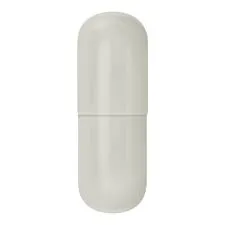
Jan . 10, 2025 08:19 Back to list
how to dissolve hpmc in water
Hydroxypropyl methylcellulose (HPMC) is a versatile polymer widely used in various industries, including pharmaceuticals, food, and construction. Its ability to form gels and act as a thickening agent makes it a popular choice. However, dissolving HPMC in water can be challenging due to its hydrophilic nature and tendency to form clumps. This article provides a comprehensive guide, combining expert insights and hands-on experience, on how to effectively dissolve HPMC in water, ensuring optimal results for your products.
For more complex formulations or higher concentrations, hot/cold inversion techniques may be useful. In this method, first create a concentrated HPMC solution in hot water (around 80°C or 176°F) to initially disperse the polymer without it dissolving. Following this, dilute the mixture with cold water, which reduces the temperature to below the gel point and dissolves the HPMC efficiently. This method allows greater control over the dissolution process and is particularly effective for specific applications requiring precise viscosity levels. Quality control is crucial in ensuring that the HPMC is fully dissolved and functioning correctly within the solution. Viscosity measurement is a reliable method for quality assessment. Using either a viscometer or rheometer, measure the viscosity of your solution to verify consistency with expected values. Variations may indicate incomplete dissolution, the presence of lumps, or errors in formulation. Gaining experience with your specific grade of HPMC will assist in predicting these values more accurately. Storage conditions for HPMC solutions also merit consideration. Finished solutions should be stored in cool, dry conditions, as exposure to fluctuations in temperature and humidity can affect viscosity and stability. A well-dissolved HPMC solution should remain stable for several days, but it is always best practice to prepare it fresh when possible. In conclusion, dissolving HPMC in water requires an understanding of its properties, careful control of environmental conditions, and appropriate techniques to ensure complete hydration and dissolution. By following these guidelines, you can achieve consistent, high-quality HPMC solutions that enhance your product formulations, ensuring reliability and performance in your applications.


For more complex formulations or higher concentrations, hot/cold inversion techniques may be useful. In this method, first create a concentrated HPMC solution in hot water (around 80°C or 176°F) to initially disperse the polymer without it dissolving. Following this, dilute the mixture with cold water, which reduces the temperature to below the gel point and dissolves the HPMC efficiently. This method allows greater control over the dissolution process and is particularly effective for specific applications requiring precise viscosity levels. Quality control is crucial in ensuring that the HPMC is fully dissolved and functioning correctly within the solution. Viscosity measurement is a reliable method for quality assessment. Using either a viscometer or rheometer, measure the viscosity of your solution to verify consistency with expected values. Variations may indicate incomplete dissolution, the presence of lumps, or errors in formulation. Gaining experience with your specific grade of HPMC will assist in predicting these values more accurately. Storage conditions for HPMC solutions also merit consideration. Finished solutions should be stored in cool, dry conditions, as exposure to fluctuations in temperature and humidity can affect viscosity and stability. A well-dissolved HPMC solution should remain stable for several days, but it is always best practice to prepare it fresh when possible. In conclusion, dissolving HPMC in water requires an understanding of its properties, careful control of environmental conditions, and appropriate techniques to ensure complete hydration and dissolution. By following these guidelines, you can achieve consistent, high-quality HPMC solutions that enhance your product formulations, ensuring reliability and performance in your applications.
Next:
Latest news
-
Versatile Hpmc Uses in Different Industries
NewsJun.19,2025
-
Redispersible Powder's Role in Enhancing Durability of Construction Products
NewsJun.19,2025
-
Hydroxyethyl Cellulose Applications Driving Green Industrial Processes
NewsJun.19,2025
-
Exploring Different Redispersible Polymer Powder
NewsJun.19,2025
-
Choosing the Right Mortar Bonding Agent
NewsJun.19,2025
-
Applications and Significance of China Hpmc in Modern Industries
NewsJun.19,2025
Related PRODUCTS







